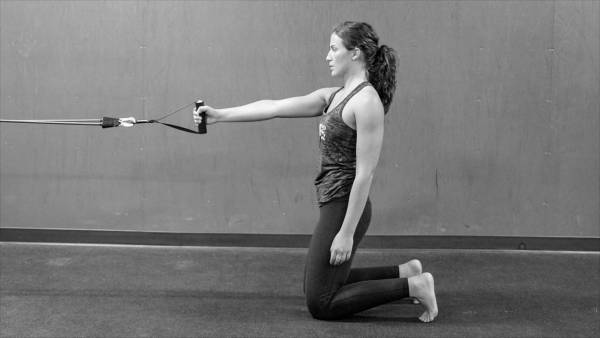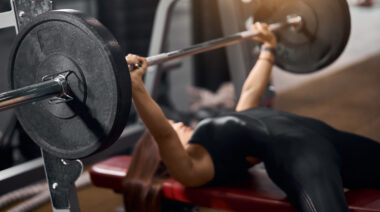Power lives in the transverse plane. If you want to unleash strength, power, and force you must harness control of rotation. The keyword here is control – concentric and eccentric control.
The abdominal obliques are primary drivers of torso rotation and anti- rotation, along with deep stabilizer muscles in the back. When you want to rotate to the right, you engage the left external oblique and the right internal oblique. Rotation to the left uses the right external oblique and the left internal oblique. They work as functional pairs.
As you know, the torso connects to the rest of the body (arms and legs), so you have cross-body connections from the gluteus maximus to the opposite side latissimus to generate force transmission on the posterior chain. This force transmission system is known as the posterior oblique subsystem and is a primary reason you can move your arms and legs together. This movement pattern sling is crucial to stabilization. Stability always precedes force production. When it doesn’t, you have decreased performance and become more vulnerable to injury.
Cues for Better Power Output
Tapping into anti-rotation and the posterior chain connection can be done with the tall kneeling unilateral pull. Why is this exercise so effective? Because most people never do it. Variety, variation, and variability are fundamental to stabilization training and adaptability. The tall kneeing pull requires stability and mobility of the hips and thoracic spine, as well as activation of the glute max and latissimus dorsi muscles. There’s no point sitting and pulling, as this takes the gluteus out of the equation and makes your lower back susceptible to injury. People sit enough all day long, so why keep them sitting when they train?
Introduce this movement into your programming to see a carryover to overall power output. Here are some coaching cues to help.
- Do mobility work on the hips, glutei, and lats before starting work on this movement pattern. Foam roll over the gluteus muscle, back, and opposite side lat to release fascial (soft tissue) adhesions. Foam roll over the anterior thigh to relax the quad and open up the hip. The anterior thigh also has reflex activation points for your glute max. The half kneeling position requires sufficient hip extension so increasing mobility is essential to the movement.
- Assume tall kneeling position. Knees are below the hip and the hip is below the shoulder. Visualize one straight line connecting your shoulder, hip, and knee. Do not hyperextend the lower back to get into the position.
- Dorsiflex the ankles. If you cannot dorsiflex the ankles without losing control of the lower back alignment, then relax the ankles into plantar flexion.
- Grasp handle, pulling towards you. Do not rotate the thoracic spine. Pull with the lat and keep contraction of the gluteus while maintaining integrity of alignment.
- Do 10 repetitions on each side. Observe any differences. Careful not to grip the handle too hard. The pulling should be from the lat and glute, not the hand grip.
- After you can control the rotation with sufficient form, you can load up more weight and add some thoracic spine rotation.
- The eccentric phase of returning the weight is very important. Don’t go too fast on the movement. Slow and controlled is the name of the game.

The Power of Rotation
In the next article we will talk about regression and progression of the movement. When you lock in the transverse plane you can unleash hellacious power. Tapping into the power of rotation will have massive carryover into all aspects of your life.
More Like This:
- How to Own the Transverse Plane With the Tall Kneeling Press
- Find Your Movement Medicine With Dr. Perry Nickelston
- Take Your Strength to the Next Level With Ipsilateral Crawling
- New on Pulse Beat Fit Today
Photo 1 courtesy of Shutterstock.






